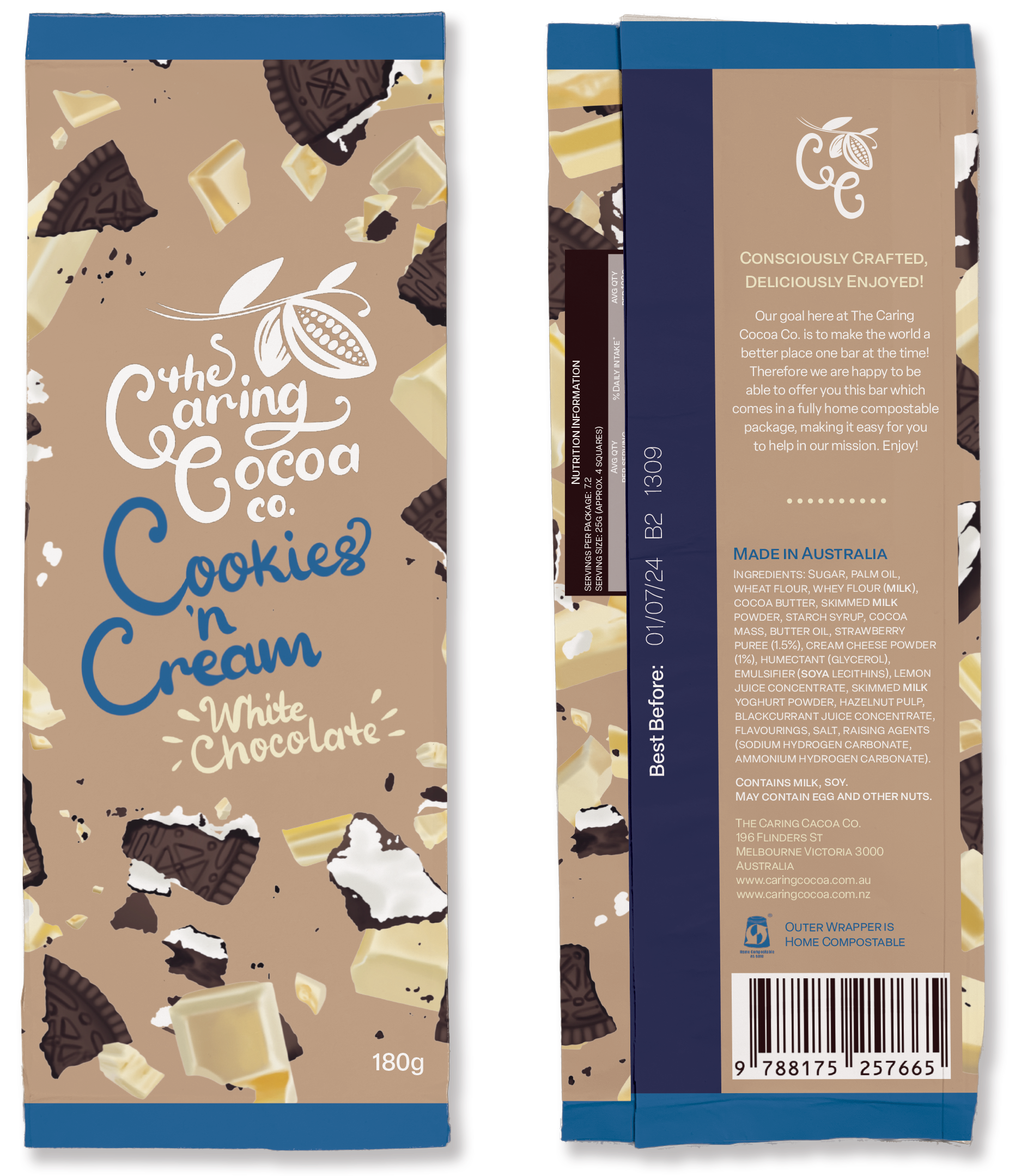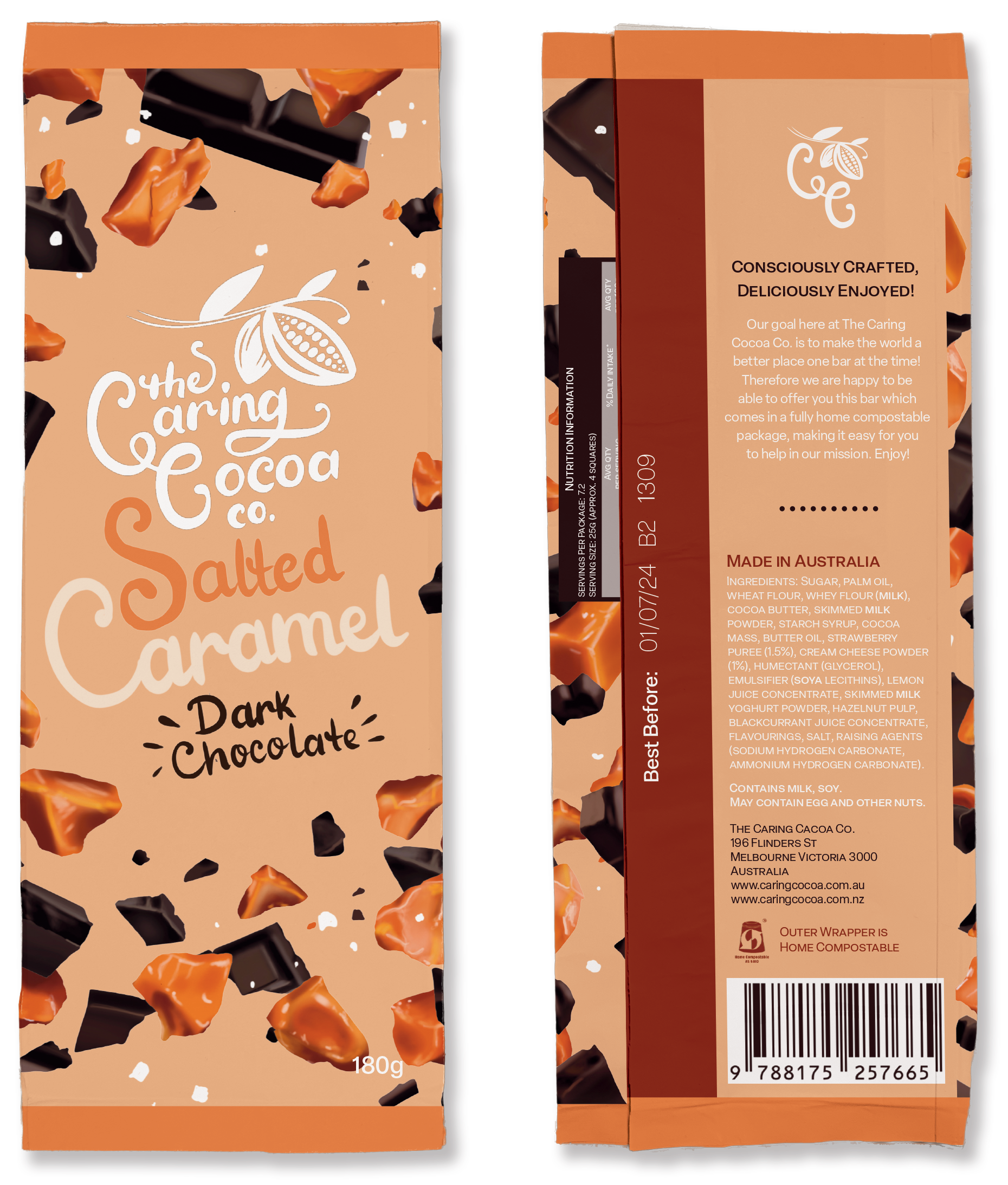For this project, we were tasked with auditing the fast-moving consumer goods (FMCG) sector and selecting one product category to research and redesign. The aim was to create a new company and packaging solution that reflects current market demands, particularly in terms of sustainability, user experience, and shelf appeal. My chosen product was chocolate bars, and I approached the project as if I were developing a new ethical brand entering today’s highly competitive snack market.
Client & Concept
Since there was no real client, I acted as the creative lead for a fictional brand I developed called The Caring Cocoa Co., with the tagline: “Consciously Crafted, Deliciously Enjoyed!” The goal of this brand was to deliver an indulgent product experience without compromising environmental responsibility — in line with the values of today’s eco-conscious consumers.
Purpose of the Project
The purpose was twofold: to meet consumer expectations for more sustainable products and to explore how packaging can influence perceptions, habits, and purchasing behaviour. The brief encouraged us to think beyond surface-level design and instead focus on systems — from materials and usability to messaging and emotional appeal.
Design Approach
My design approach started with an audit of existing chocolate packaging, both mainstream and boutique. I evaluated what worked visually, how brands used storytelling, and how they communicated values like sustainability. One of the gaps I noticed was in compostable packaging that still felt premium and giftable — many eco-packaged items still lacked the fun, bold visuals that make a product memorable or appealing for special occasions.
With that insight, I developed home compostable packaging that minimises material use, is easy to open, and offers clear visual flavour cues. The idea was to make the bar both practical for on-the-go use and special enough to give as a small gift — without adding waste.
Materials, Processes & Techniques
One of the most important aspects of the project was material selection. I used Compost Me™ wrapper paper made from FSC- and PEFC-accredited pulp, which breaks down in less than 26 weeks without leaving toxic residues. I also chose food-grade, plant-based inks and natural adhesives made from inert raw plant materials, ensuring that every component of the packaging could be safely composted at home.
From a visual standpoint, I began with thumbnail sketches of wrapper layout options and experimented with illustration styles that could feel both organic and playful. The final design uses a minimal colour palette — mostly whites and browns to evoke a natural feel — and I added bold secondary colours that change with each flavour. Each variation includes hand-drawn illustrations of key ingredients, which serve both as decorative elements and clear flavour indicators on shelf.



Outcomes & Reflection
The result is a brand and packaging solution that not only responds to modern consumer expectations — like ethical production, reduced waste, and appealing aesthetics — but also showcases how design can drive responsible behaviour through small, everyday choices.
This project gave me the opportunity to think holistically — not just about how something looks, but how it functions, communicates, and ultimately fits into a more sustainable future. It was a valuable exercise in combining strategic thinking, material research, and creative visual design — and it reaffirmed my belief that sustainable solutions don’t need to sacrifice joy, colour, or shelf impact.
